Articles of 2009
Where Have You Gone, Harry Greb?
Black clouds gather fast and break over Forbes Field in Pittsburgh where Tommy Gibbons (51-0) and Harry Greb (159-12) are fighting like hell. It’s the last day of July in 1920. The crowd scatters for shelter in the electrical storm. Thunder crashes as Gibbons, standing over six feet tall with a twenty pound weight advantage, lands his feared right cross flush on the jaw of Greb in round seven. It doesn’t faze the smaller man. Greb is Greb –he’s all over Gibbons from every angle, with punch stats that are off the charts. The lone reporter who had not taken cover under the ring strains to see through the downpour and calls the particulars as his peers scribble away in wet notebooks: “Greb lands a right to the face, a left to the stomach, a right to the ear, a left to the face, a right to the neck…” To Gibbons, lightning seems to strike from every angle.
Almost fifty years later, Francis B. Maloy recalled that this fight was “eerie …like a scene from Dante.”
Only two days earlier, Harry Greb was at Jack Dempsey’s training camp in New York City where he fought his third exhibition in three days with the heavyweight champion. Dempsey, known for sending sparring partners out of the ring sideways, could not handle the man known as the “Pittsburgh Windmill” despite being twenty-five pounds heavier and four inches taller. The last day of sparring ended after only two rounds –Greb landed a right that split Dempsey’s eye wide open.
In September, Dempsey was preparing for an upcoming fight with Billy Miske. Heavyweight “Big” Bill Tate and middleweights Greb and Marty Farrell were his sparring partners. According to the New York Times, “the bout with Greb was a real one… a real honest to goodness battle.” Greb was a “veritable whirlwind” – swarming all over the champion and “forcing him around the ring”. Dempsey was throwing his famous short left hooks and rights but could neither connect nor keep him off. Greb hit Dempsey “almost at will”, at times leaping off the canvas to land shots upstairs.
As the year drew to a close, Greb faced “Captain” Bob Roper at Mechanics Building in Boston. Roper was a journeyman heavyweight known for hard punching and hard ways. With a befitting skull and crossbones patched onto black trunks, he was a disqualified four times in his career and once entered the ring with a live snake around his neck. Despite the presence in his corner of Jack Blackburn (whom Greb had already defeated and who went on to train Joe Louis), Roper did not land more than a half dozen shots on Greb, whose speed and activity was dizzying. The Boston Daily Globe reported that Roper had to cover his face with both hands as a “sea of gloves” came at him. It was “laughable at times” when Roper stretched his neck to avoid overhands to the head that always seemed to land anyway. This was vintage Greb. His aerial assaults from the outside were no less effective than his work inside on a much larger man.
Two years later, Greb would fight Tommy Gibbons again at Madison Square Garden. Since the loss to Greb at Forbes Field, Gibbons earned twenty-one stoppages in twenty-six victories. The winner of this bout would fight Gene Tunney for the American Light Heavyweight title as “a qualifying test” to face Dempsey. Seated amid high society were the interested parties –Tunney and Dempsey. More than 14,000 had come out to see Gibbons, prematurely decreed as “Dempsey’s next opponent”. It was almost a black tie affair. Hundreds of women in evening dress raised the eyebrows of the boys from the Bowery and the Lower East Side but their cheers co-mingled as “society cast aside all aloofness”.
The wrong man won. Gibbons took only three out of the fifteen rounds. The betting figure that favored him was the ratio by which he was out landed in the fight: two-to-one. “I never saw so many boxing gloves in my life,” Gibbons admitted the next day, “his punches seemed to come from everywhere –from the gallery, from under my shoes, from behind my back.”
In May the handicappers at Madison Square Garden got smart and made Greb a three-to-one favorite when he entered the ring against Gene Tunney. Tunney, undefeated before this fight and never defeated afterwards, could not halt the “human hurricane” either, despite being warned by Dempsey himself about Greb’s uncanny abilities. According to the New York Times, Tunney’s exceptional defensive skills were overwhelmed by Greb’s attack and he was “completely at sea for fifteen rounds.” Greb fractured Tunney’s nose in two places in the first round and soon Gene’s handsome features were rearranged into a Picasso painting. Tunney’s corner ran out of adrenaline chloride to stop the bleeding from his nose, mouth, and deep cuts over both eyes. Abe Attell, sitting ringside, ran off to a druggist and returned with a supply which he cuffed to Doc Bagley, Tunney’s chief second. It didn’t matter. Tunney reported that all he saw for most of the fight was a “red phantom”. Greb “was never in one spot for more than half a second,” he said in an interview years later, “all my punches were aimed and timed properly but they always wound up hitting empty air. He’d jump in and out, slamming me with a left and then whirling me around with his right or the other way around.”
Tunney lost every round.
Dempsey ducked Greb.
Dempsey fought Gibbons the year after Greb whipped him, and would later twice lose to Gene Tunney –the second time in the famous “Long Count Fight”. Greb had been calling out Dempsey almost as soon as Dempsey began making waves in 1918, and stepped up the pressure after he knocked out Gunboat Smith in one round the year after Dempsey had knocked Smith out in two. By June of 1922 it got to the point where Greb’s manager showed up at Dempsey’s manager’s office with a generous proposition. It went nowhere. Curiously, King Dempsey was more than willing to fight heavyweights that Greb had already defeated, including not only Gibbons and Tunney, but also Miske and “KO” Bill Brennan. Greb was 2-0-1 against Miske, and Brennan couldn’t beat Greb to save his life –losing all four bouts against Greb inside of one year.
Earlier in the careers, Dempsey and Greb shared several opponents. Among them was Willie Meehan who Greb beat twice though outweighed by thirty pounds. Dempsey posted two losses to Meehan within the same time frame. “The bigger they are,” Tunney asserted, “the less respect Harry had for them… I have seen him virtually climb opponents a foot taller and bring them down to his size.” As late as August 1925, Dempsey was still ducking the 5’8 middleweight, claiming that the only “fight he wanted was with Harry Wills”, who was a 6’2, 213 pound African-American Heavyweight. Dempsey never faced Wills either, though pursued by Wills for years.
At the end of Greb-Tunney fight, Tunney collapsed and had to be carried into his dressing room. Stubbornly refusing to go to the hospital, doctors on the scene stitched up Gene’s face, reset his nose, and used a stomach pump to remove about two quarts of blood, brandy and orange juice, and adrenalin chloride. Greb, unmarked, didn’t look like he even had a fight. He spent the night drinking ginger ale (his preferred beverage) in a speakeasy surrounded by friends.
Happy Albacker was among them. Happy had a secret, but secrets are hard to keep when you’re three sheets to the wind. When the inevitable glass was raised and someone toasted Greb’s victory over the undefeated Gene Tunney “though handicapped by height, weight, and reach”, Albacker blurted out “-and by one eye!” Had it not been for Greb’s ability to parry unexpected blows, the secret would have been out. It would have meant the end of his career.
Harry Greb’s vision in his right eye had been diminishing since the summer of 1921, when Kid Norfolk thumbed him during a particularly violent mill in Pittsburgh. Bill Paxton, the author of “The Fearless Harry Greb,” offers compelling evidence that Greb suffered a retinal tear in the Norfolk fight and so had only partial vision when he faced Gibbons, Tunney, and Tommy Loughren (incidentally, three of the greatest light heavyweights of all time). It is believed that Greb went completely blind in his right eye after his fifth fight with “Captain” Bob Roper. He took almost two months off afterwards (one of his longest periods of inactivity), spent a week in the hospital, and was seen with patches over both eyes. His return fight took place on New Year’s Day, 1923 –against Captain Bob Roper. He would fight sixty-seven more times, take the middleweight title, defend it six times, fight and beat terrors like Tiger Flowers and Mickey Walker, master all-time greats like Jimmy Slattery and Maxie Rosenbloom –all while blind in one eye.
According to the Boston Daily Globe, Greb earned a few more technical knockouts in Pittsburgh one night, though unofficially. After a female companion in his car was relieved of $95 and a ring on a lonely road in Highland Park by five robbers, Greb reported the incident to the police.
When they arrived on the scene, the officers noticed blood all over the road. It was not Greb’s.
Moved at the ensuing hearing by the weeping wife and children of one of the assailants, Greb offered to post bail. For those close to him, this was not a surprise. Contrary to the myth that he was a half-cocked hell-raiser, Greb was a kind man and a practicing Roman Catholic. There is nothing to suggest that he was anything less than in love with his wife Mildred throughout their courtship and marriage. When she died of tuberculosis in 1923, he was at her bedside. Harry was a faithful husband even if he was not the kind of widower who held a candle.
To his credit, Greb had no regard for color lines. Some boxing historians rightfully hesitate before testifying to the greatness of fighters like Dempsey and Tunney because they would not fight the full range of threats on the spectrum. Tunney never once faced an African American in seventy-seven professional contests. This kind of discrimination affects legacy. It has to. Greb, by contrast, avoided no man. He faced several black fighters beginning as early as 1915 against Jack Blackburn, as well as Willie Langford, Kid Norfolk, Tiger Flowers, Kid Lewis, and Allentown Joe Gans.
Greb’s last fight was in 1926. It was an attempt to regain the middleweight crown he lost to Tiger Flowers. The determined ex-champion turned the clock back and fought well but lost another split decision to Flowers. Most believed that the victory was rightfully his; that he had done more than enough to take back the title. Greb himself said “well, that was one fight I won if I ever won any.” But the windmill was creaking. Greb was finally slowing down.
In September, Greb had his right eye removed and replaced with a glass eye. He confided to a friend that his career was over and that he planned on opening a gym in downtown Pittsburgh. It must have been bittersweet for Greb as he sat in the audience at the Dempsey-Tunney title fight in Philadelphia later that month. He watched Tunney do what he always knew he himself could do if given the opportunity –outbox Dempsey and become world heavyweight champion.
The end was near. After what was supposed to be a non-serious operation on his face, Harry fell into a coma. At 2:30pm on October 22, 1926, the 32-year-old Greb died of heart failure. It was shocking news.
This fighter’s fighter, often seen smiling in the heat of battle and laughing when hit with a good shot, lived only two months after his final bout. Perhaps Greb was a romantic who couldn’t live without the object of his passion. This much is beyond dispute: In a rougher era when boxing was just emerging from the seedy underground and men fought to live, Harry Greb lived to fight.
His legacy dwarfs what we see today. In a career that spanned from 1913 to 1926 and over 300 fights, Greb fought and beat almost a dozen Hall of Famers (including two who were previously never beaten) and champions in four divisions. Ninety years ago, he gave us a boxing milestone that you can bet your house will never be repeated:
Greb fought forty-five times in 1919.
-That’s an average of one bout every eight days against an array of sluggers, boxer-punchers, and defensive specialists. That’s a record of 45-0 against not only other middleweights, but light heavyweights and heavyweights –in one calendar year!
Raise a glass of ginger ale in honor of the Pittsburgh Windmill: a remarkable middleweight who fought them all –any time, any place; the spirit smiling behind every club fighter, contender, and champion who fights with the sudden, ruthless passion of a summer storm …for the glory of it all.
Here’s to you, Harry Greb.
The author wishes to both acknowledge and highly recommend Bill Paxton’s The Fearless Harry Greb, Jack Cavanaugh’s Tunney, Peter Benson’s Battling Siki, and Andrew Gallimore’s A Bloody Canvas. Thanks to the Boston Public Library Microfilm Department, an invaluable resource for locating obscure fight reports. Gregory Toledo can be contacted at scalinatella@hotmail.com
-

 Featured Articles3 weeks ago
Featured Articles3 weeks agoThe Hauser Report: Zayas-Garcia, Pacquiao, Usyk, and the NYSAC
-
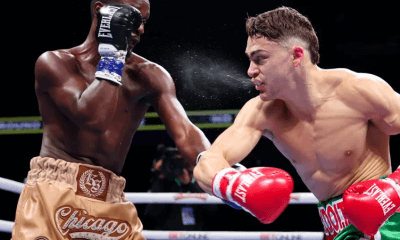
 Featured Articles2 weeks ago
Featured Articles2 weeks agoOscar Duarte and Regis Prograis Prevail on an Action-Packed Fight Card in Chicago
-
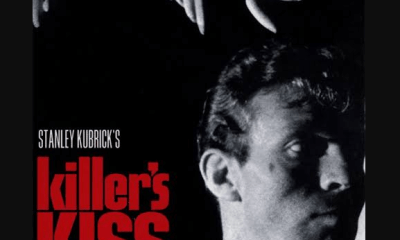
 Featured Articles1 week ago
Featured Articles1 week agoThe Hauser Report: Cinematic and Literary Notes
-
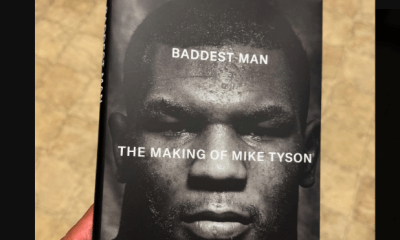
 Book Review6 days ago
Book Review6 days agoMark Kriegel’s New Book About Mike Tyson is a Must-Read
-
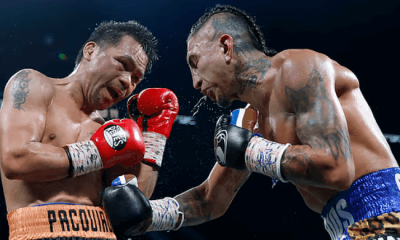
 Featured Articles4 weeks ago
Featured Articles4 weeks agoManny Pacquiao and Mario Barrios Fight to a Draw; Fundora stops Tim Tszyu
-
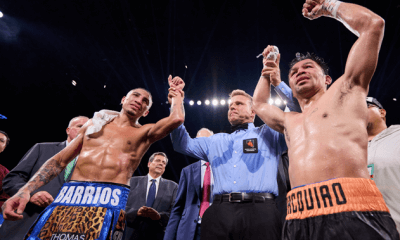
 Featured Articles4 weeks ago
Featured Articles4 weeks agoArne’s Almanac: Pacquiao-Barrios Redux
-

 Featured Articles3 weeks ago
Featured Articles3 weeks agoRemembering Dwight Muhammad Qawi (1953-2025) and his Triumphant Return to Prison
-
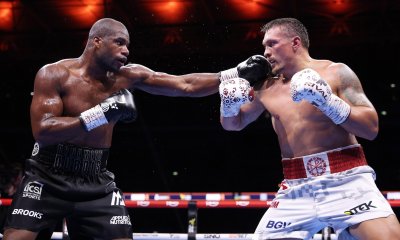
 Featured Articles4 weeks ago
Featured Articles4 weeks agoOleksandr Usyk Continues to Amaze; KOs Daniel Dubois in 5 One-Sided Rounds














